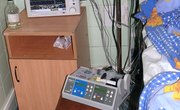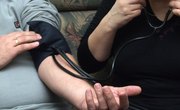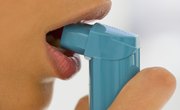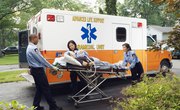If you are an RN with a passion for trauma medicine, you may want to consider becoming a flight nurse. In this exciting role, you would provide critical life support to patients being transported by ambulance or helicopter. Enrolling in an RN to paramedic bridge program offers a fast track to specialization in high-level prehospital care. Although stressful, the work of a flight nurse can be immensely fulfilling.
RN to paramedic bridge programs fill nursing training gaps. Paramedic bridge courses teach nurses how to use ambulatory emergency equipment when assisting patients outside a medical setting.
Paramedic vs. RN
Paramedics provide life support measures while transporting patients to a hospital by ambulance. They may also work at the scene of a natural disaster or in the aftermath of a terrorist attack. Nurses work in a variety of settings, like clinics, neonatal units, schools, state hospitals and assisted-living facilities. Nursing training covers many aspects of patient care and disease prevention, whereas paramedics are trained to stabilize and transport.
Qualifications to Become a Paramedic
Paramedics start their career working as emergency medical technicians, or EMTs. Basic and advanced EMT training and certification can be completed in one to two years depending on the program and state licensing rules. Paramedic training is more in depth. Students practice advanced life support techniques, placing an intravenous line and using respiratory equipment on the ambulance. Graduates of an approved program may sit for a licensing exam that will qualify them for employment as a paramedic.
The Bureau of Labor Statistics groups EMTs and paramedics into one occupational category. According to the BLS, EMTs and paramedics earned a median annual salary of $33,380 in 2017, meaning that half made more and half made less than $33,380. Ten percent of EMTs and paramedics earned more than $56,990.
Qualifications Needed for an RN
All states require completion of an approved licensing program and passing the National Council Licensure Exam. Aspiring nurses may pursue a nursing diploma, an associate degree in nursing or a Bachelor of Science in Nursing degree. Hospitals prefer the four-year BSN.
The nursing curriculum covers areas such as nursing fundamentals, pharmacology, clinical nursing and health assessment. Foundation courses in anatomy, physiology, chemistry, microbiology, algebra, nutrition and psychology are other common requirements.
The Bureau of Labor Statistics reports that in 2017, the median pay for entry-level RNs with a bachelor’s degree was $70,000 per year. RNs in the highest 10 percent income bracket made more than $104,100. The BLS indicates that job opportunities will be best for experienced RNs with specialist certifications.
RN to Paramedic Bridge Program
Although not widely available, you can find a few RN to paramedic online courses and programs with a clinical component. For example, Crowder College in Missouri offers an RN to paramedic bridge program that is approved by the Committee on Accreditation of Allied Health Educational Programs. The hybrid bridge program at Crowder College is eight weeks long. Didactic instruction is online and clinical training is required onsite.
Creighton University in Nebraska offers a two-week paramedic certification program for RNs who have two years of critical-care experience and EMT credentials along with basic life support and advanced cardiac life support certifications. After successfully completing the course, participants can sit for the NREMT paramedic exams that test cognitive and psychomotor skills.
RN to Paramedic Bridge Courses
Nursing students enrolled in an RN to paramedic bridge program study subjects not covered extensively in the standard RN curriculum. In accordance with the national paramedic curriculum, RNs learn more about assessing trauma, handling pediatric emergencies, advanced airway and IV placement and medication administration under supervision of an ER doctor available by phone.
Columbus State Community College offers a 15-credit RN to paramedic bridge certificate that prepares RNs to sit for the National Registry Exam for Paramedics. The first term provides nurses with EMT training. The second term focuses on prehospital trauma care for serious injuries along with advanced cardiac life-support measures. The third term teaches students to quickly evaluate a situation and take life-saving measures while remaining calm and professional.
Related Articles
References
Writer Bio
Dr. Mary Dowd is a dean of students whose job includes student conduct, leading the behavioral consultation team, crisis response, retention and the working with the veterans resource center. She enjoys helping parents and students solve problems through advising, teaching and writing online articles that appear on many sites. Dr. Dowd also contributes to scholarly books and journal articles.










